It’s been some time since I spotlighted a specific textile. Blue versions are always on my mind especially ones with random imperfections in their patterns so today’s focus is Japanese Shibori. I’m on a lifelong quest to acquire unique textiles, especially ones with a history to them. Shibori fabrics have been popular in fashion and home design for a while now, and with deep blues remaining a popular hue again this summer, it’s no wonder these dyed indigo textiles are in high demand.
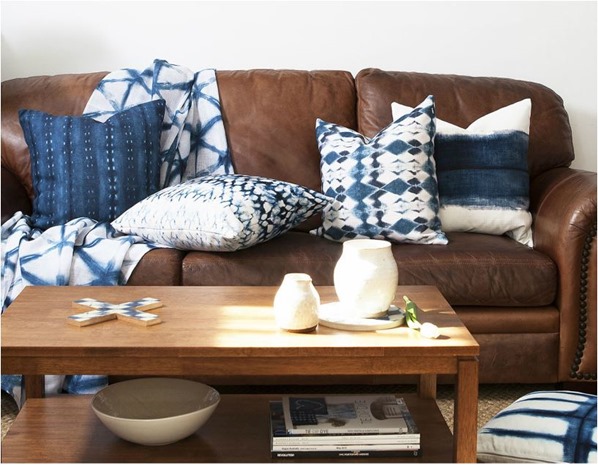
The technique dates back centuries, shibori is defined by Shibori.org as follows:
“It comes from the Japanese verb root shiboru, ‘to wring, squeeze, press.’ The closest translation would be ‘shaped-resist dyeing.’ The shaping process reserves areas that are recorded as patterns with characteristically soft edges and crinkled textures when cloth is dyed. Rather than treating cloth as a two-dimensional flat surface, shibori techniques give it a three-dimensional form by folding, crumpling, stitching, plaiting, or plucking and twisting… a cloth may be dyed repeatedly using a different shaping method each time.”
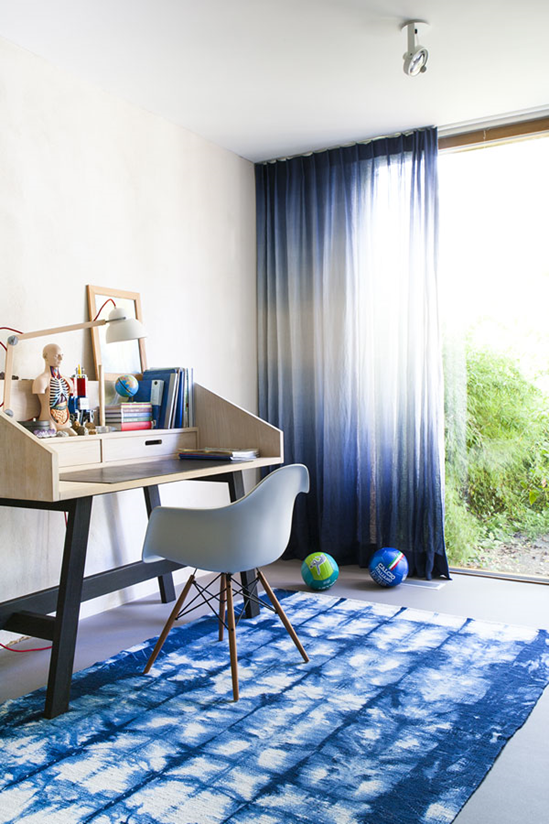
jande jonge via bloesem
There are many different types of shibori techniques, differentiated by the materials and steps used to create a particular pattern. One style we’ve embraced in the US is Kanoko known as tie dye where cloth is bound by threads or bands, other shibori techniques have very specific definitions.
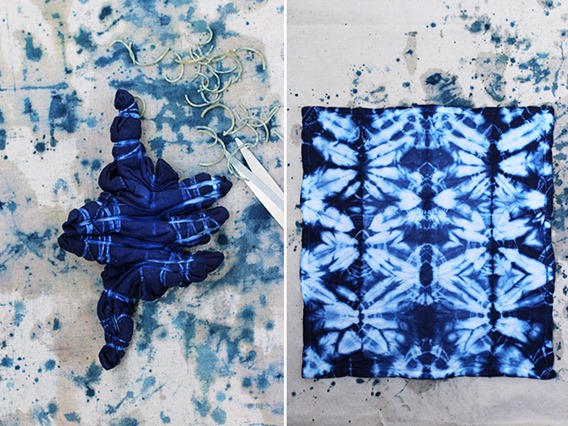
Arashi requires pole wrapping, Kumo is pleated and bound, Nui is stitched, the list goes on and the pattern possibilities are endless. Years ago I assumed tie dye came from the 1960s and was something we all did to our T-shirts at summer camp, but that craft does have its roots in Japanese shibori.
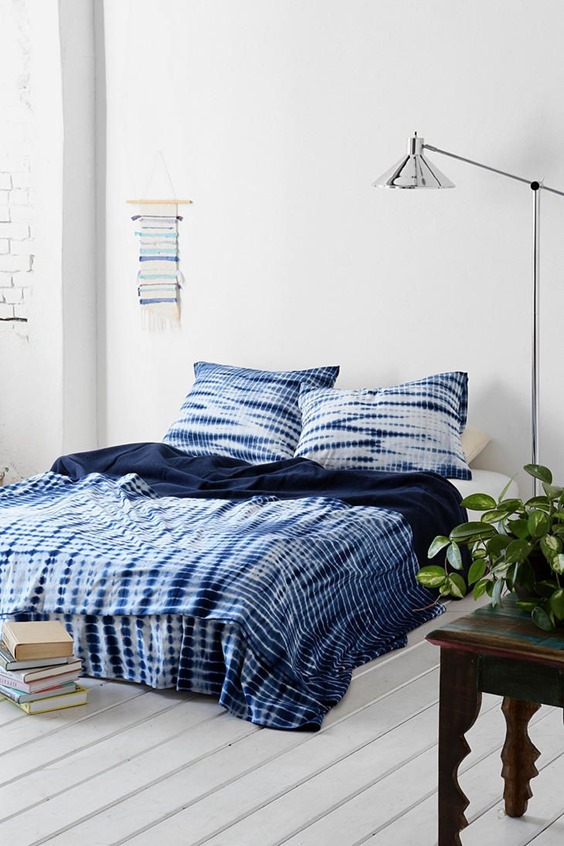
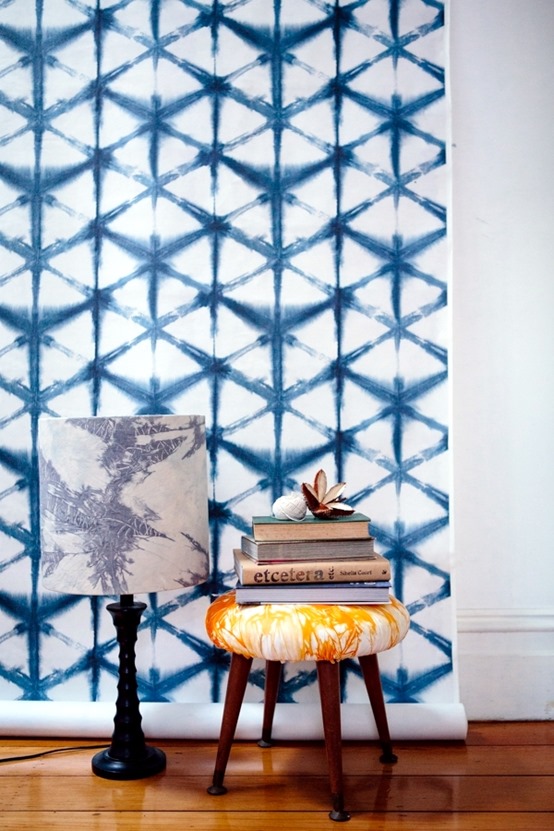
Randomness and imperfection occur with this resist dyeing process, beautiful patterns emerge from folding, twisting, and binding cloth then submerging it in indigo dye. Many artisans have taken it to a level of near perfection.
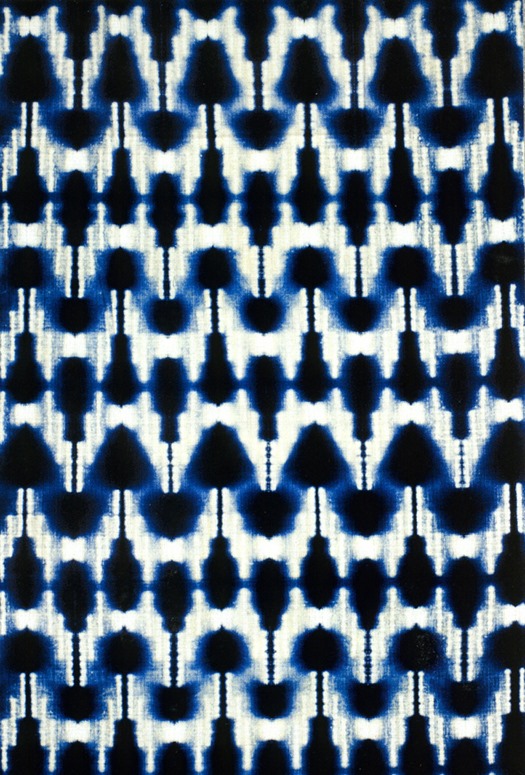
I haven’t tried any shibori techniques yet which is so wrong since it combines two of my favorite things: fabric and deep blue. I need to get together a group of friends and host a party, “Shibori and Chardonnay” – sounds like fun to me!
Here are a few DIY projects to inspire:
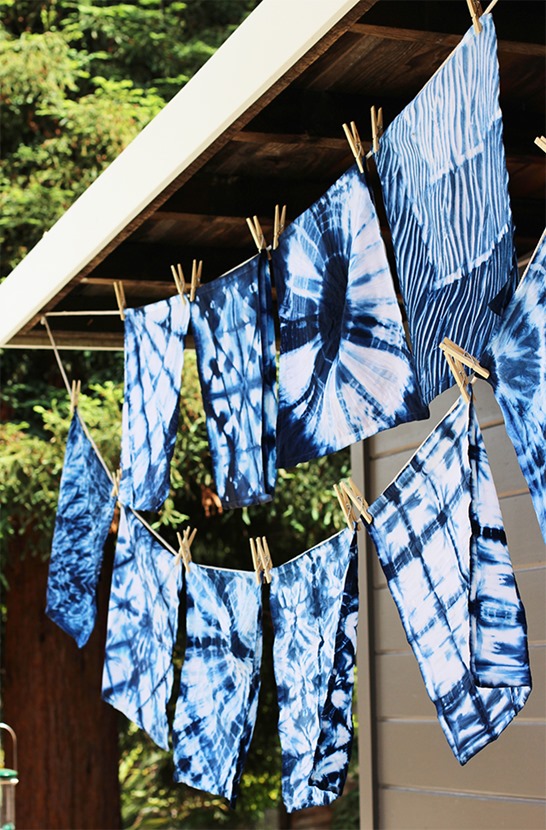
diy at honestly wtf
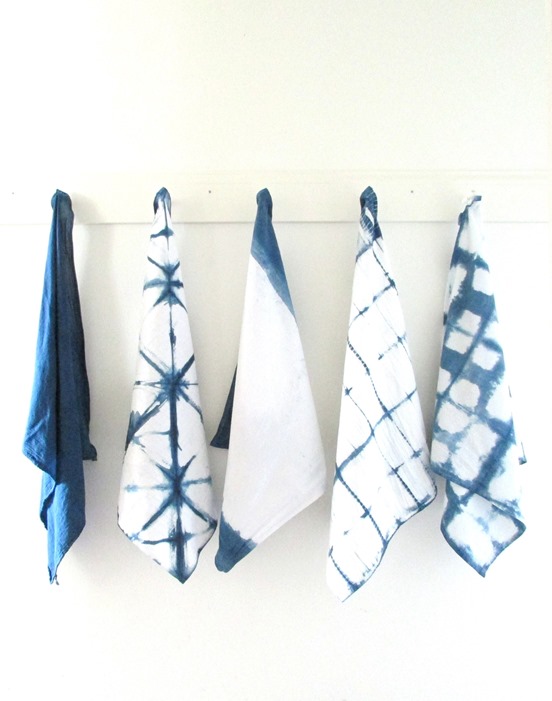
diy at francois et moi
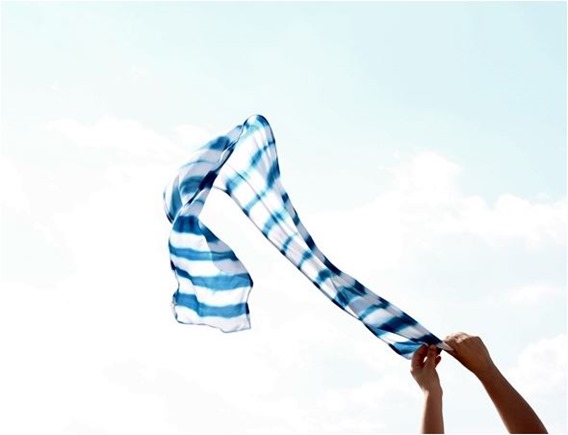

More Textile Spotlights:
|
|
|
|
|
Kilim |
…
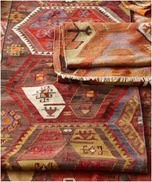
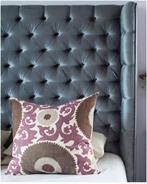

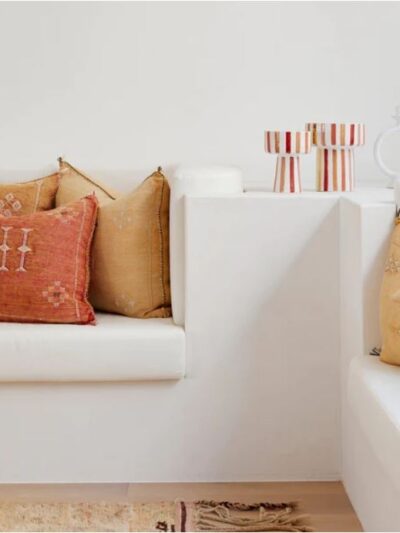
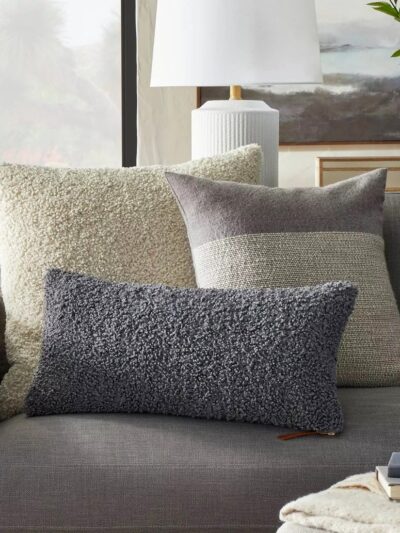
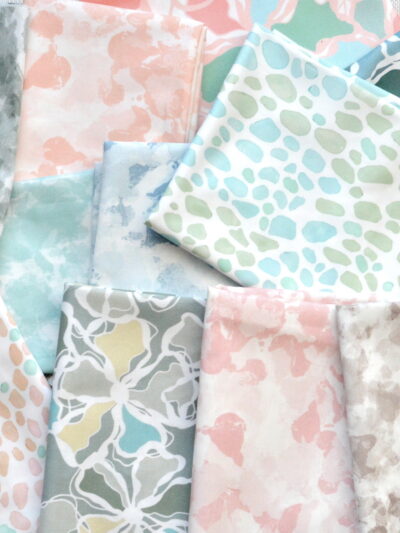
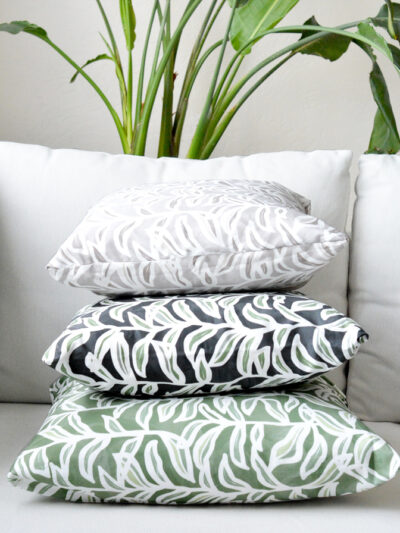

Kate, If you host a Shibori and Chardonnay party, I would love an invite. Just give me enough time to book a flight :).
And a belated thank you for the watercolor note cards yesterday. I printed the Thank You version so far and it is beautiful!
Kim
Ha ha that would be great Kim! Seriously… my birthday is in September, I may gather a group of my ladies together for that exact event!
Kate
blue is never wrong.
I love shibori! I might try it out on some cheap white cotton napkins and see how it goes. Another beautiful blue Asian textile you should check out is Nankeen. This shop has some great items: https://www.etsy.com/shop/NankeenDesign
I love this. I had no idea that tie dye was Japanese in origin. I want to try my hand at this!
– Kaitlyn | http://www.TheCrownFox.com
Oh! I wish I could come! I love decorating with blues now. Colors definitely come and go, don’t they?
(Ps. Kate, were you able to find my email for the subcontractors list?)
No Lisa, I double checked my inbox and spam, don’t see it, can you resend?
Replied to your email. Thanks, Kate!
Omg, that bed cover and pillow case, with that rug in front… I am getting. Thanks Kate for the ideas (L)
The deep indigo shade is gorgeous in this type of technique. I especially love the third image from the top.
I loveeee blue and white and this style is awesome! Great pictures and I definitely learned something today. I also thought tie dye was just a design on a shirt or fabric you created, I didn’t even think they’re was an origin where it came from!
Lauren Baxter | LB Designs
xx